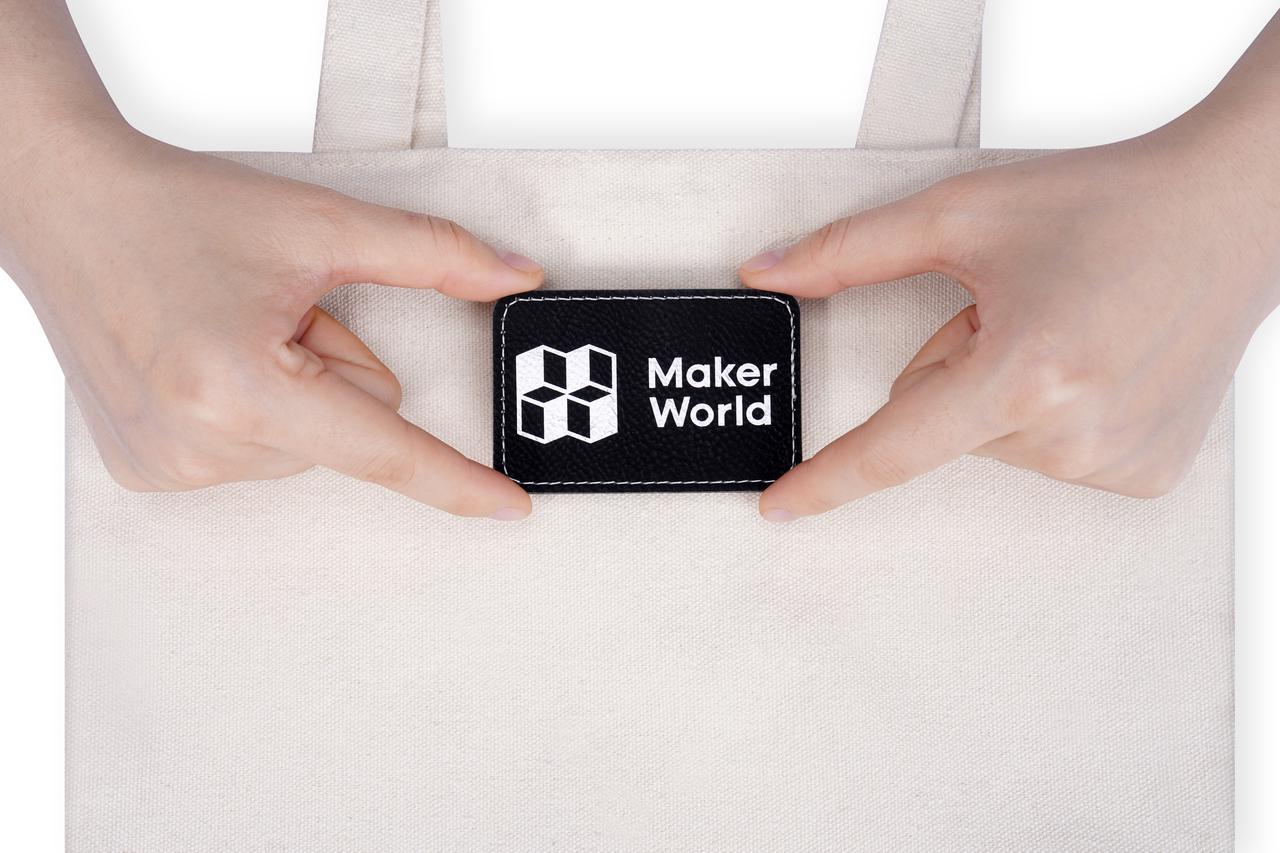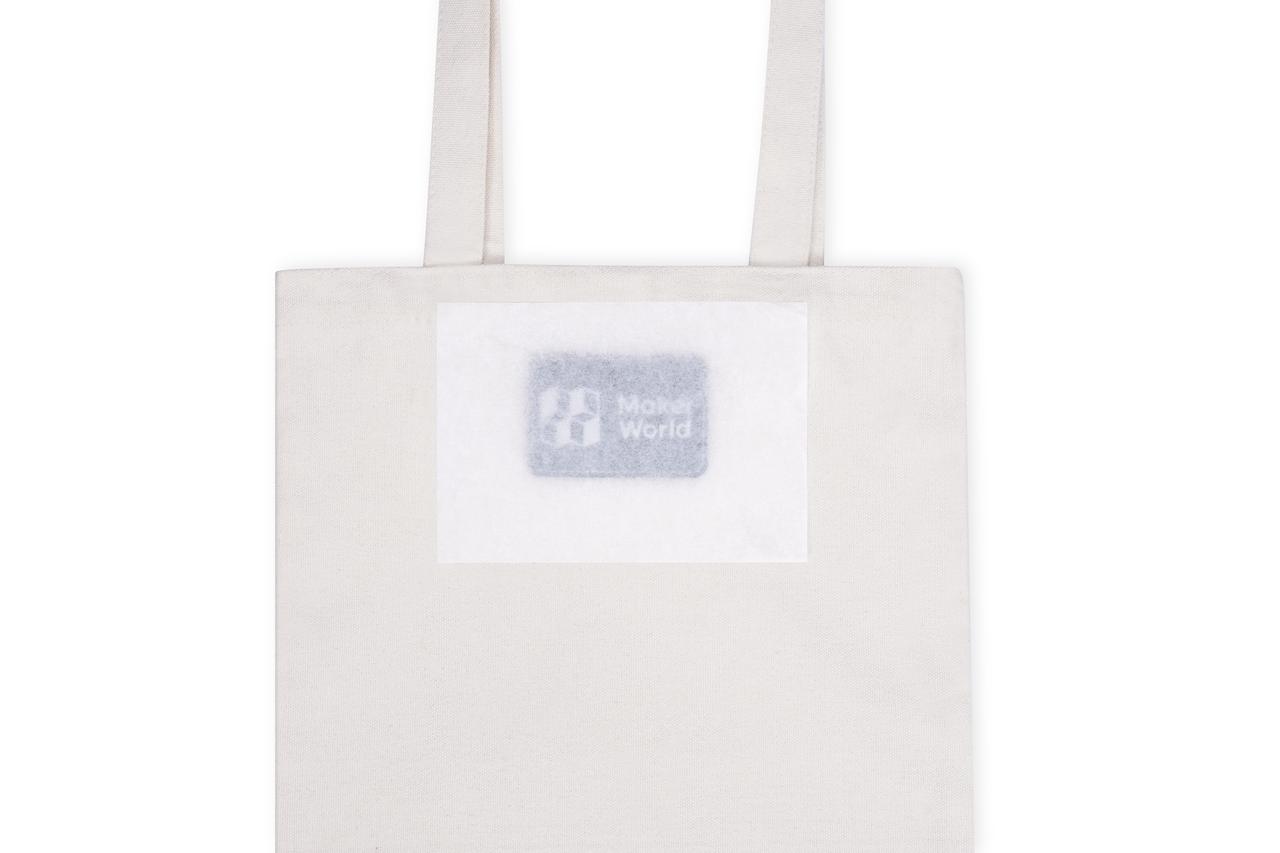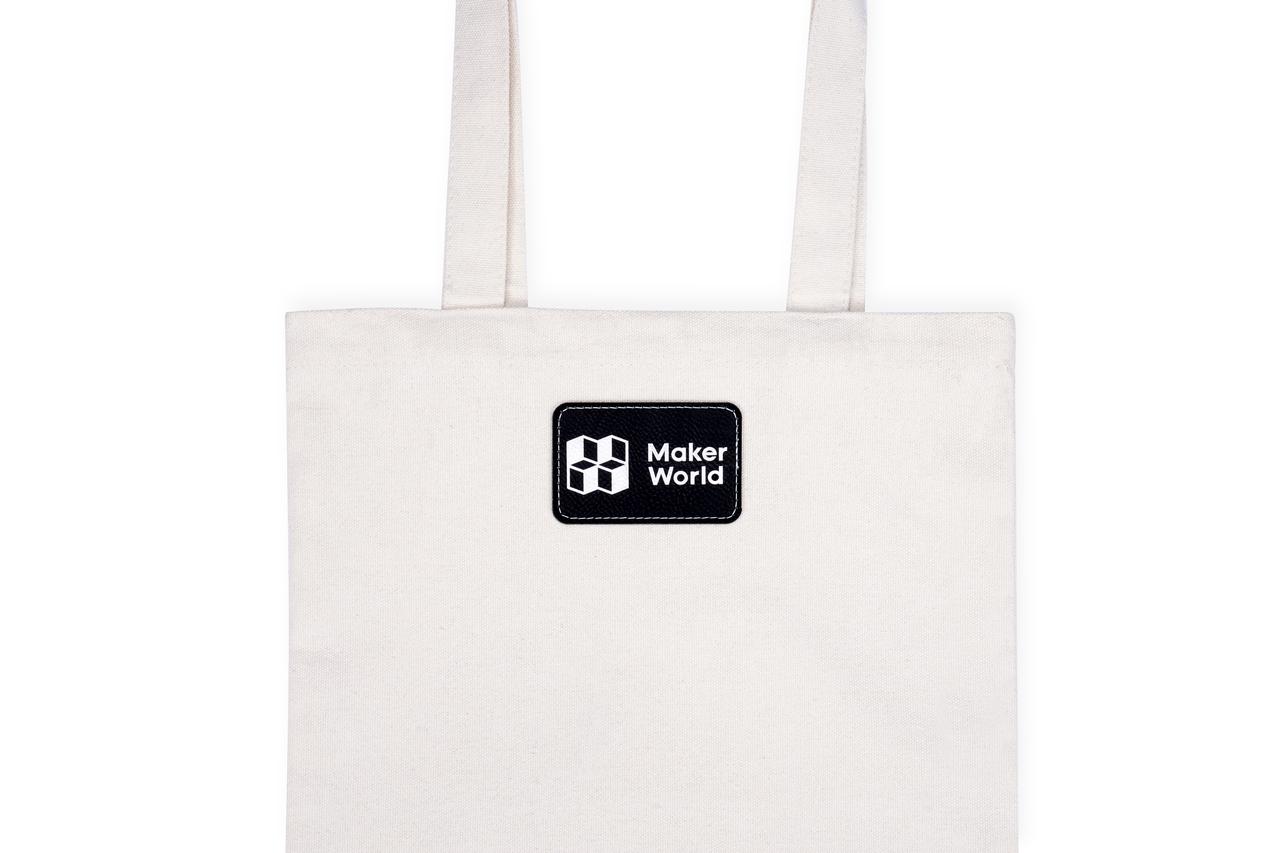The pictures in this article will be replaced with more refined versions upon the release of the official version.
¶ Plywood
Plywood is a type of engineered wood panel made by layering multiple sheets of veneer and bonding them with adhesive. It is known for its stability and ease of processing, making it widely used in DIY crafting, creative display design, and interior decoration. Bambu's plywood uses high-quality poplar wood as the core material to minimize charring and provide smooth cut. This creates a high-quality decorative panel specifically designed for laser cutting and engraving.
¶ Comparison of the characteristics of various types of plywood
| Plywood type | Appearance characteristics | Application areas | Advantages |
|---|---|---|---|
| Basswood plywood | Fine wood grain, beige | Fine crafts, puzzles, children's DIY, painting projects | Easy to cut and engrave, suitable for painting and fine design |
| Birch plywood | Natural wood grain, soft wood tones | Home decoration, office supplies, fine crafts | Smooth surface, cost-effective, suitable for painting and fine engraving |
| Black walnut plywood | Dark aesthetic, flowing grain patterns | High-end home decoration, custom artwork, fine carving, jewelry making | Excellent durability, suitable for high-end customization and elegant crafts |
| Sapele plywood | Reddish brown tones, rosewood texture | High-end decoration, custom furniture, musical instrument manufacturing, wood carving | Excellent durability, suitable for high-end customized projects |
¶ What to do if plywood warps?
Plywood Bending: Causes, Prevention, and Restoration
¶ Safety Tips for Laser Processing of Plywood
When laser processing plywood, to ensure processing quality and operational safety, please pay attention to the following points:
- Monitor the entire process
-
Plywood may ignite due to high temperature during laser processing.
-
Be sure to monitor the entire process during processing, and do not leave it unattended to avoid combustion due to overheating.
-
It is recommended to prepare a fire extinguisher near the equipment to deal with emergencies.
- Ensure good ventilation
During processing, plywood may release harmful gases such as formaldehyde and VOC (volatile organic compounds), accompanied by smoke and dust, which may pose a threat to health.
-
Please ensure that the processing environment has good ventilation conditions. It is recommended to equip it with high-efficiency air purification equipment.
-
After processing, wait until the smoke and exhaust gas are completely discharged from the inside of the equipment before opening the front door to avoid inhaling residual gas.
-
During operation, it is recommended to wear a gas mask or activated carbon mask to strengthen personal protection.
- Choose appropriate laser power and speed
- According to the thickness and density of plywood, reasonably adjust laser power and cutting speed. It is recommended to use the official parameters provided by the device manufacturer to ensure processing effectiveness.
By strictly adhering to the above operational guidelines, you can effectively reduce the risks of fire and harmful gases while ensuring processing quality and personnel safety.
¶ Bamboo Board
The bamboo board is made from high-quality pure bamboo, featuring clear natural bamboo grain on a smooth and even surface, making it ideal for laser cutting and engraving. The bamboo board is easy to work with and has an attractive texture, making it a perfect choice for creating home decor items such as trays, coasters, bamboo lamps, and office storage boxes. The rich natural grain of bamboo may result in varying depths during laser engraving, showcasing the uniqueness of the material.
¶ Methods for Addressing Bamboo Board Warping
Due to changes in environmental humidity and temperature, uneven stress, or uneven distribution of bamboo fiber density, the bamboo board may warp. The following methods can help restore the bamboo board to a flatter condition:
-
Maintain the environmental humidity between 45%-55% RH, avoiding direct sunlight and strong air conditioning.
-
Place the warped bamboo board on a flat surface and use a heavy object to press it down.
-
Be patient; the bamboo board will return to normal after some time.
Precautions:
-
If the bamboo board is damp, it is recommended to place it in a cool, ventilated area to air dry.
-
Do not spray water or soak the board (as this may cause cracking or mold).
-
Do not forcibly straighten the board (thin bamboo boards are prone to cracking along the glued sides).
In addition, we strongly recommend that the bamboo board be stored in a closed environment with stable humidity to reduce the chance of direct contact with changes in air humidity, thereby effectively avoiding the occurrence of bending. For example, the bamboo board can be properly stored in a sealed ziplock bag to ensure its good condition.
¶ Safety Tips for Laser Processing of Bamboo Board
When laser processing bamboo board, to ensure processing quality and operational safety, please pay attention to the following points:
- Monitor the entire process
-
Bamboo board may ignite due to high temperatures during laser processing.
-
Be sure to monitor the entire process during processing, and do not leave it unattended to avoid combustion due to overheating.
-
It is recommended to prepare a fire extinguisher near the equipment to deal with emergencies.
- Ensure good ventilation
During processing, bamboo board may release harmful gases such as formaldehyde and VOC (volatile organic compounds), accompanied by smoke and dust, which may pose a threat to health.
-
Please ensure that the processing environment has good ventilation conditions. It is recommended to equip it with high-efficiency air purification equipment.
-
After processing, wait until the smoke and exhaust gas are completely discharged from the inside of the equipment before opening the front door to avoid inhaling residual gas.
-
During operation, it is recommended to wear a gas mask or activated carbon mask to strengthen personal protection.
- Choose appropriate laser power and speed
- According to the thickness and density of bamboo board, reasonably adjust laser power and cutting speed. It is recommended to use the official parameters provided by the device manufacturer to ensure processing effectiveness.
By strictly adhering to the above operational guidelines, you can effectively reduce the risks of fire and harmful gases while ensuring processing quality and personnel safety.
¶ Acrylic
Acrylic has a smooth surface texture. Its excellent thermoplastic properties and dimensional stability make it an ideal choice for laser cutting and engraving, providing high-quality material support for various creative projects.
¶ What acrylic can be processed by Bambu Lab 10W and 40W laser modules?
Both Bambu Lab 10W and 40W laser modules use a blue light semiconductor laser source with a wavelength of 455nm. Since acrylic materials usually have a high transmittance to blue light in the 455nm band, most of the laser energy will pass through the material instead of being effectively absorbed. Blue light semiconductor lasers cannot cut transparent acrylic, white acrylic, and blue acrylic, and the processing effect on thicker acrylic is relatively limited, and only some opaque acrylic can be cut. Users can choose suitable acrylic according to their specific needs. It is recommended to refer to the product list provided by the Bambu Lab's official store to obtain the best processing effect.
¶ Safety Tips for Laser Processing of Acrylic
When laser processing acrylic, to ensure processing quality and operational safety, please pay attention to the following points:
- Remove the protective film before processing
The protective film on the surface of the acrylic may burn at high temperatures, causing safety hazards. In addition, burning protective film will generate smoke and stains, affecting the cutting effect and surface quality. Therefore, the protective film must be completely removed before processing to ensure that the processing proceeds smoothly.
- Monitor the entire process
-
Acrylic materials are flammable and may cause flames during laser processing.
-
Be sure to monitor the entire process during processing to avoid overheating of the material and causing combustion. It is recommended to prepare a fire extinguisher near the equipment to deal with emergencies.
- Ensure good ventilation
-
During processing, acrylic will release toxic and harmful gases such as methyl methacrylate, accompanied by smoke and dust, which may pose a threat to health.
-
Please ensure that the processing environment has good ventilation conditions, and it is recommended to be equipped with high-efficiency air purification equipment.
-
After processing, wait until the smoke and exhaust gas are completely discharged from the inside of the equipment before opening the front door to avoid inhaling residual gas.
-
During the operation, it is recommended to wear a gas mask to enhance personal protection.
By strictly abiding by the above operating specifications, the processing quality and personnel safety can be effectively guaranteed.
¶ Metal
The 10W and 40W laser modules (450nm blue semiconductor laser) from Bambu Lab cannot cut metals but can perform high-precision engraving or marking on various metallic materials, including aluminum, stainless steel, and copper.
¶ Applicable Metallic Materials (Engraving/Marking)
- Anodized Aluminum (Optimal Application)
- The blue laser can effectively remove the anodized layer, exposing the underlying metal to create high-contrast markings.
- Suitable for applications such as nameplates, electronic enclosures, and personalized identifications.
- Stainless Steel
- The blue laser can induce oxidative discoloration on the stainless steel surface but cannot achieve deep engraving.
- Plated Metals (e.g., Chrome-plated, Galvanized Sheets)
- Capable of removing the surface plating to reveal the underlying material, but with limited depth.
- Caution: Harmful fumes may be generated (e.g., zinc oxide from galvanized layers).
- Copper & Brass
-
Due to the lower absorption rate of the blue laser, the engraved markings may be shallow, often requiring multiple passes at higher power to enhance the effect.
Precautions: -
Surface Treatment: For untreated metal surfaces, pre-coating or oxidation treatment may be necessary to improve laser absorption and achieve better engraving results.
-
Safety Protection: Metal engraving may generate harmful gases (e.g., zinc oxide from galvanized layers, chromium oxide from chrome-plated layers). Ensure that the working environment is well-ventilated and consider using air purification equipment.
¶ PU Leatherette Fabric
PU leatherette fabric is a kind of imitation leather fabric made of polyurethane material. It has excellent flexibility, good dimensional stability and delicate texture, and is an ideal choice for DIY production.
¶ Safety Tips for Laser Processing of PU Leatherette Fabric
When laser processing PU leatherette fabric, to ensure processing quality and operational safety, please pay attention to the following points:
- Ensure good ventilation
PU leatherette fabric releases toxic and harmful gases during laser processing, including nitrogen oxides, isocyanates, etc., which may cause harm to health.
-
Please ensure that the processing environment is well ventilated, and it is recommended to use high-efficiency air purification equipment to quickly exhaust the smoke and exhaust gas generated during the processing.
-
After the processing is completed, wait until the smoke and exhaust gas inside the equipment are completely exhausted before opening the front door of the equipment to avoid inhaling residual gas.
-
During the operation, it is recommended to wear a gas mask to strengthen personal protection.
- Monitor the entire process
-
PU materials are flammable and may cause flames during laser processing.
-
Be sure to monitor the entire process during processing to avoid overheating of the material and causing combustion. It is recommended to prepare a fire extinguisher near the equipment to deal with emergencies.
- Choose the appropriate laser power and speed
-
PU leatherette fabric is highly sensitive to lasers, and excessive power may cause overburning of the material, charring of the edges, or deformation. It is recommended to use the Bambu Lab official materials and the built-in parameters of the Bambu Suite software to obtain a smoother and more worry-free experience.
-
According to the material thickness and cutting requirements, adjust laser power and cutting speed to ensure the processing effect and material integrity.
By following the above precautions, you can obtain high-quality processing results while ensuring safety.
¶ PU Iron-On Patch
Users can use laser to remove the surface of PU iron-on patch to reveal the underlying color and obtain clear patterns or text effects. There is an iron-on adhesive layer on the back of the material, which can be attached to the surface of various objects such as textiles and leather by heating. DIY creators often use it in scenarios such as clothing decoration, shoe and hat design, and luggage customization.
¶ PU Iron-On Patch Sticking Guide
- Stick the PU iron-on patch on the surface of the DIY object;

- Place a layer of protective paper for heat transfer on its surface;

- Place the preheated 150-160℃ iron on the protective paper for heat transfer, press gently, and wait for 25-30 seconds;

- Remove the iron and release paper, and after it cools down to a level that is not too hot to touch, check whether the patch is completely adhered. If it is not adhered, increase the heating time locally.

¶ Paper
Bambu Lab laser modules can accurately cut and engrave paper products, greatly improving the efficiency and accuracy of users when making models, decorations and other creative objects.
¶ Safety Tips for Laser Processing of Paper
When using laser to process paper products, to ensure processing safety and results, please pay attention to the following matters:
- Monitor the entire process and pay attention to fire risks
-
Paper products are extremely flammable, and laser processing may cause flames due to high temperatures.
-
Monitor the process throughout and do not leave the equipment running unattended.
-
Prepare a suitable fire extinguisher (such as carbon dioxide or dry powder fire extinguisher) next to the equipment to deal with sudden outbreak of fires.
- Choose the appropriate laser power and speed
-
Paper is thin and very sensitive to laser power. Excessive power may cause edge charring or directly ignite the material. It is recommended to use the Bambu Lab official materials and the built-in parameters of the Bambu Suite software to obtain a smoother and more worry-free experience.
-
According to the type of paper (such as ordinary paper, cardboard, kraft paper, etc.), reasonably adjust the laser power and processing speed.
-
It is recommended to use low power and high cutting speed parameters to reduce the risk of overheating of the material while ensuring the processing effect.
By following the above precautions, you can effectively reduce the risk of fire while ensuring the processing quality.
¶ Cork
Cork is characterized by being lightweight, soft, and environmentally friendly. It is easy to cut and possess good scratches and dent resistance to a certain extent. Bambu lab laser module can perform precise engraving, cutting and other processing on cork.
¶ Safety Tips for Laser Processing of Cork
When laser processing cork sheets, please pay attention to the following points to ensure processing quality and operational safety:
- Monitor the Processing Process at All Times
-
Cork sheets are flammable, and high temperatures during laser processing may ignite them.
-
It is essential to monitor the process continuously and never leave it unattended to avoid overheating and potential combustion.
-
Keep a fire extinguisher nearby to respond to any emergencies.
- Ensure Good Ventilation
During processing, cork sheets may release smoke and volatile gases, posing health risks.
-
Please ensure that the processing environment has good ventilation, and it is recommended to equip efficient air purification devices.
-
After processing is complete, wait for the smoke and waste gases to be completely expelled from the equipment before opening the front door to avoid inhaling residual gases.
-
During operation, it is advisable to wear a protective mask (such as an activated carbon mask) to reduce smoke inhalation.
- Choose Appropriate Laser Power and Speed
-
Cork is a relatively porous material, and laser processing can easily cause charring, affecting cutting quality.
-
Adjust the laser power appropriately based on the thickness of the cork; it is recommended to use the official parameters provided by the device manufacturer to ensure processing effectiveness.
By strictly adhering to the above operational guidelines, you can effectively reduce the risks of fire and harmful gases while ensuring processing quality and personnel safety.
¶ End Notes
We hope the detailed guide provided has been helpful and informative.
If this guide does not solve your problem, please submit a technical ticket, we will answer your questions and provide assistance.
If you have any suggestions or feedback on this Wiki, please leave a message in the comment area. Thank you for your support and attention!